Hola Amigos! Va a ser un gran cambio en El Spruce Blog partir de este post, y que es el hecho de que cada puesto será ahora en dos idiomas - inglés y español. Mi público español es cada vez mayor y traductores en el internet son mierda, y en mi propio esfuerzo para aprender español, El Spruce Blog ahora será bilingüe! Me gustaría dar las gracias a Verena Goldbach por darme la idea con su propio blog (http://germanatalgonquin.wordpress.com/), que es en Inglés y Alemán.
It's been a pretty typical Spring here in Algonquin Park, with cool temperatures and clouds of blackflies making a notable presence, unlike last year, which was lacking in either of those two respects.
Spring is often a busy time for us here, especially the Group Ed crew because many school groups want to get here before the bugs and that usually means we've got our hands full every day. We make hay while the sun shines, and the sun don't shine for long here.
Ha sido una primavera bastante típico aquí en Algonquin Park, con temperaturas frescas y las nubes de moscos negros que hacen una notable presencia, a diferencia del año pasado, que no existe en ninguno de estos dos aspectos.
La primavera es a menudo un tiempo muy ocupado para nosotros aquí, especialmente el equipo de Grupo Ed porque muchos grupos escolares quieren llegar antes de que los insectos y que por lo general significa que tenemos las manos llenas todos los días. Hacemos heno mientras brilla el sol, y el sol no brilla por mucho tiempo aquí.
I did get some free time this Spring and made use of it by looking for some early Spring insects (and feeding the blackflies). These are ones that usually have short flying seasons in the Park, likely due to freak weather that drops them shortly after they emerge (which is not uncommon) They live hard, fast lives.
Me dio un poco de tiempo libre esta primavera y nos hizo uso de ella en busca de algunos insectos del comienzo de la primavera (y la alimentación de los simúlidos). Estos son los que suelen tener temporadas cortas que vuelan en el Parque, probablemente debido al clima anormal que les cae poco después de emerger (que no es poco común) Viven vidas duras y rápidas.
One of these is a small dragonfly that is rarely observed by naturalists - it inhabits the depths of spruce bogs and breeds in small pools of water at the bases of spruce trees and other tiny wetlands.It only flies for a short period of time in May-June - a time when not many naturalists are looking for dragonflies, which are usually more prominent later in the year. The name of this creature conveys it all - the Ebony Boghaunter.
Verena Goldbach and I had a free afternoon and went out to a known location to try and bust some bog ghosts.
Uno de estos es una pequeña libélula, que rara vez se observa por los naturalistas - que habita en las profundidades de los pantanos de abeto y razas en pequeños charcos de agua en las bases de abetos y otros humedales pequeños. Es sólo vuela durante un corto período de tiempo entre mayo y junio - un momento en que no muchos naturalistas están buscando libélulas, que suelen ser más prominente a finales de año. El nombre de esta criatura transmite todo - Fantasma Negra del Patano.
Verena Goldbach y yo tuvimos una tarde libre y salieron a un lugar conocido para tratar de encontrar algunos fantasmas del pantano.
Blackflies were definitely out. As were dragonflies - we caught a couple of Hudsonian Whitefaces, American Emeralds and some fresh Corporals.
I swung at a small dragonfly that was flying low, expecting it to be a whiteface of sorts, but through the net I saw it... a female Ebony Boghaunter! High fives were in order as we examined this beautiful spectre of the spruces, a dragonfly I had not seen since 2009. It was the only one we saw.
Moscas negras eran definitivamente. Como eran las libélulas - cogimos un par de Carablancas, Esmeraldas y Cabos (tipos de libellulas).
Giré en una pequeña libélula que volaba bajo, esperando que fuera una carablanca de todo tipo, pero luego lo vi ... una hembra de Fantasma Negra! Felicitaciones en regla como se analizó este hermoso espectro de las piceas, una libélula que no había visto desde 2009. Era el único que vimos.
Moscas negras eran definitivamente. Como eran las libélulas - cogimos un par de Carablancas, Esmeraldas y Cabos (tipos de libellulas).
Giré en una pequeña libélula que volaba bajo, esperando que fuera una carablanca de todo tipo, pero luego lo vi ... una hembra de Fantasma Negra! Felicitaciones en regla como se analizó este hermoso espectro de las piceas, una libélula que no había visto desde 2009. Era el único que vimos.
We were also looking for Elfins, small members of the hairstreak family of butterflies. They fly early, and the caterpillars of both Eastern and Western Pine Elfins are unique as they are some of the very few caterpillars that eat Pine and Spruce. The two elfin species are quite similar, and we saw many of both species.
También buscábamos Elfos, pequeños miembros de la familia de Hairstreak de mariposas. Vuelan temprano, y las larvas de los Elfos Orientales y Occidentales son únicos ya que son algunas de las pocas larvas que se alimentan de pinos y abetos. Las dos especies enanos son muy similares, y vimos muchos de ambas especies.
También buscábamos Elfos, pequeños miembros de la familia de Hairstreak de mariposas. Vuelan temprano, y las larvas de los Elfos Orientales y Occidentales son únicos ya que son algunas de las pocas larvas que se alimentan de pinos y abetos. Las dos especies enanos son muy similares, y vimos muchos de ambas especies.
Eastern Pine Elfin - Elfo Oriental
Western Pine Elfin - Elfo Occidental
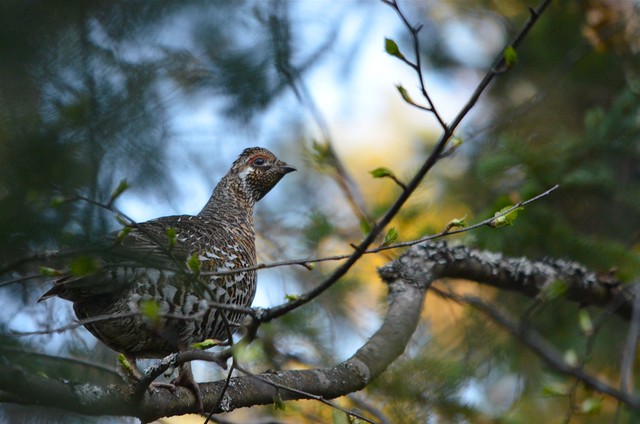
Another early an exceptionally interesting butterfly found in Algonquin is the Chryxus Arctic. This is a butterfly one can find in open areas with lots of reindeer lichen - the Old Airfield -
Otro de los primeros de una mariposa excepcionalmente interesante que se encuentra en Algonquin es el Ártico Chryxus. Se trata de una mariposa se puede encontrar en espacios abiertos con una gran cantidad de renos liquen - Antiguo Aeródromo -
is an excellent place to check, and while on a workshop there, I put up a large butterfly and, sure enough -
es un excelente lugar para ver, y si bien en un taller allí, me puse una mariposa grande y, por supuesto -
The main difference between these two is the jagged vertical line on the hindwing. In Western Pine Elfin, the triangles formed by this line are very pointy, while in the Eastern, the peaks are usually quite blunt.
Of course, one cannot refrain from birding while in Algonquin and while most were only heard, the highlight here was a Spruce Grouse eating buds up in a tree.
La principal diferencia entre estos dos es la línea vertical irregular en las alas posteriores. En Elfo Occidental, los triángulos formados por esta línea son muy puntiagudos, mientras que en el Elfo Oriental, los picos suelen ser bastante contundente.
Por supuesto, uno no puede dejar de observar aves, mientras que en Algonquin y aunque la mayoría sólo fueron escuchados, lo más destacado aquí era un Gallo Canadiense comer brotes de un árbol.
Of course, one cannot refrain from birding while in Algonquin and while most were only heard, the highlight here was a Spruce Grouse eating buds up in a tree.
La principal diferencia entre estos dos es la línea vertical irregular en las alas posteriores. En Elfo Occidental, los triángulos formados por esta línea son muy puntiagudos, mientras que en el Elfo Oriental, los picos suelen ser bastante contundente.
Por supuesto, uno no puede dejar de observar aves, mientras que en Algonquin y aunque la mayoría sólo fueron escuchados, lo más destacado aquí era un Gallo Canadiense comer brotes de un árbol.

Another early an exceptionally interesting butterfly found in Algonquin is the Chryxus Arctic. This is a butterfly one can find in open areas with lots of reindeer lichen - the Old Airfield -
Otro de los primeros de una mariposa excepcionalmente interesante que se encuentra en Algonquin es el Ártico Chryxus. Se trata de una mariposa se puede encontrar en espacios abiertos con una gran cantidad de renos liquen - Antiguo Aeródromo -
is an excellent place to check, and while on a workshop there, I put up a large butterfly and, sure enough -
es un excelente lugar para ver, y si bien en un taller allí, me puse una mariposa grande y, por supuesto -
Chryxus Arctic - Artico Chryxus
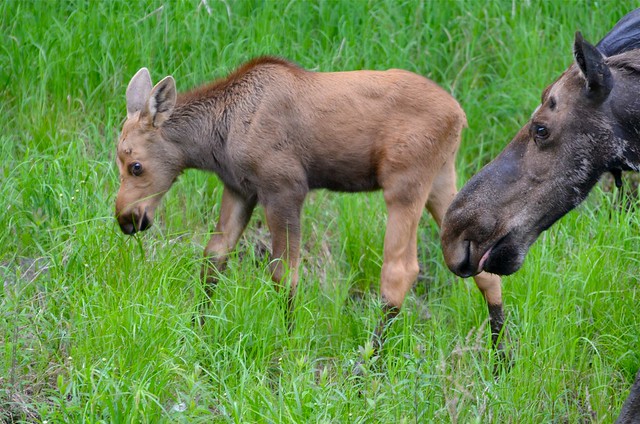
Check out how well camouflaged this animal is - it is quite incredible. Arctics of all species are dark butterflies - this is an evolutionary trait that has likely occurred due to the fact that all of these species live in colder climates and darker animals warm up faster than pale ones. Boghaunters have also evolved to become dark as well, as they fly early and in cold weather.
Besides the small and intricately patterned glory that inhabits the park during Spring, of course there is also a whole bunch of baby big furry creatures for the crowds to gawk at -
Además de la gloria pequeño e intrincado patrón que habita en el parque durante la primavera, por supuesto, también hay un montón de bebés grandes criaturas peludas de las multitudes de ver -
Echa un vistazo a lo bien camuflado este animal es - es bastante increíble. Ártico de todas las especies son mariposas oscuras - este es un rasgo evolutivo que probablemente se ha producido debido al hecho de que todas estas especies viven en climas más fríos y oscuros animales calentarse más rápido que los claros. Fantasmas Negras también han evolucionado para convertirse en oscuro y, mientras vuelan temprano y hace frío.
Besides the small and intricately patterned glory that inhabits the park during Spring, of course there is also a whole bunch of baby big furry creatures for the crowds to gawk at -
Además de la gloria pequeño e intrincado patrón que habita en el parque durante la primavera, por supuesto, también hay un montón de bebés grandes criaturas peludas de las multitudes de ver -

And though I usually roll my eyes at tourists, there is definitely a magic to the re-birth of life here in the Northwoods during this time of year - my favourite time to be up here. Now only if the blackflies would slow down just a tad....
Y aunque por lo general rodar mis ojos a los turistas, definitivamente hay una magia para el renacimiento de la vida aquí en la selva norte en esta época del año - mi momento favorito para estar aquí. Ahora sólo si las moscas negras se ralentizará un poco ....

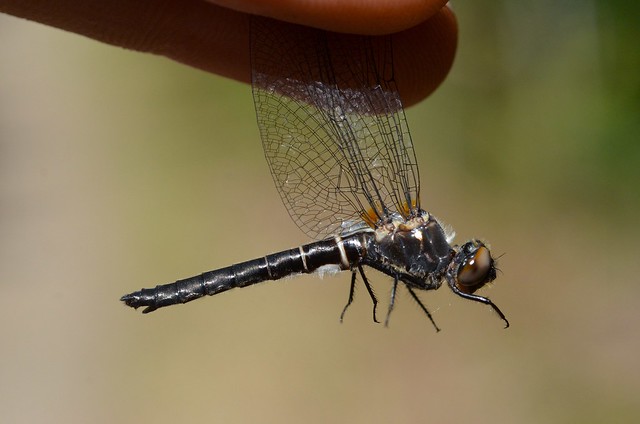
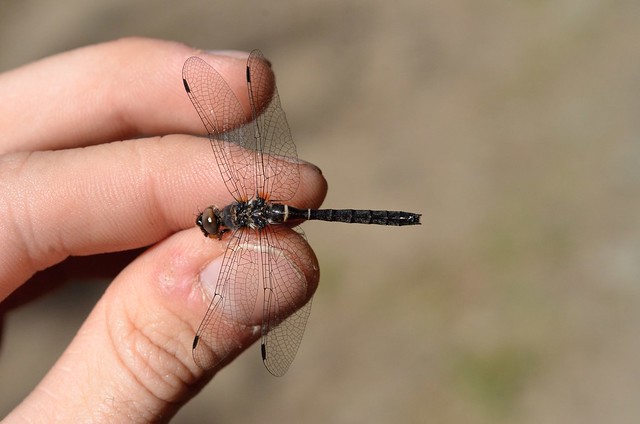

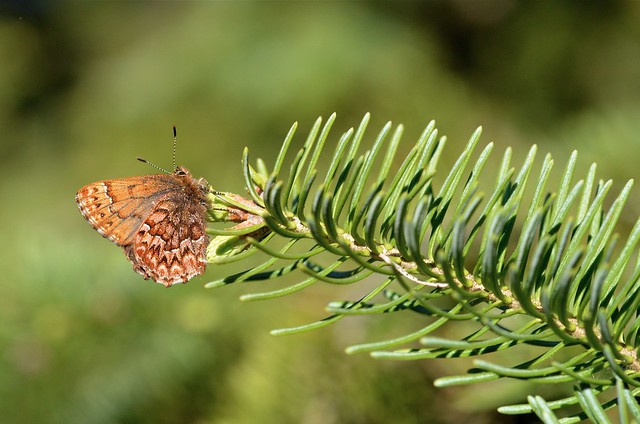

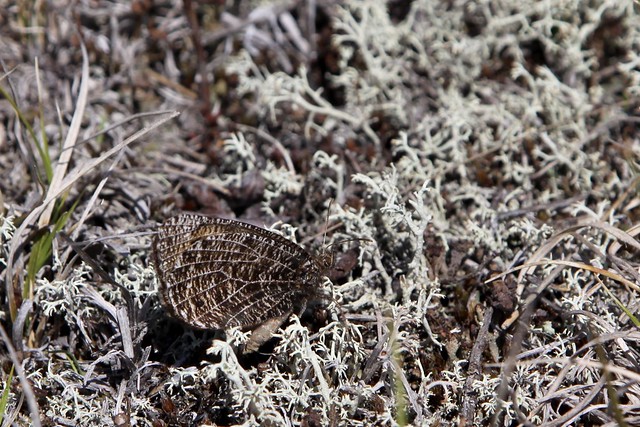
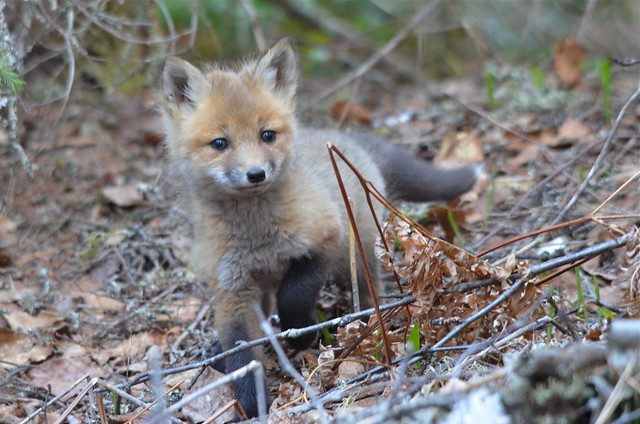

Recently found your blog and enjoyed reading a bit about Algonquin. Been going there (too seldom) for 60 years, so I will look forward to more posts.
ReplyDelete